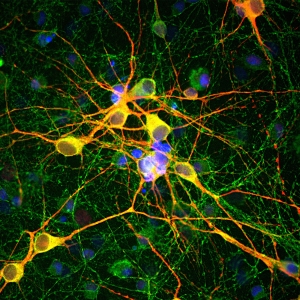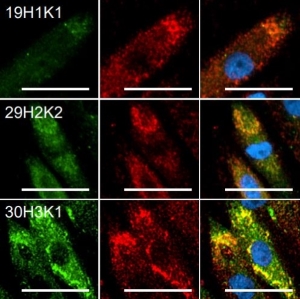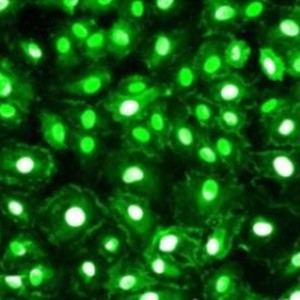Product Details
Product Sizes
| Size | List Price | Price | Cart |
|---|---|---|---|
| 100 ul | $685.00 | Add to Cart |
Calcium Sensing Receptor (CaSR) was the first GPCR identified whose main physiological ligand is an ion and it has the ability to sense extracellular concentration of Ca2+. CaSR's activity is mediated by a G-protein that activates a phosphatidylinositol-calcium second messenger system and it is capable of interaction with VCP, RNF19A (execute CASR's ubiquitination) and ARRB1. CaSR is expressed primarily in chief cells of parathyroid glands where, when activated by high Ca2+ concentrations, it decreases PTH release (calcium-retaining hormone) to maintain Ca2 +. Alternatively, under hypocalcemia conditions, CaSR is inactive and PTH is released which restores normocalcemia by acting on kidney as well as intestine to increase Ca2 + absorption, and on bone, to mobilise skeletal Ca2 +. CaSR is also expressed in other tissues which do not play an obvious role in Ca2 + homeostasis (breast, blood vessels, liver, and placenta) and altered CaSR expression and/or activity have been found associated with parathyroid glands disorders, osteoporosis, vascular calcification and cancer. CaSR is implicated in regulation of diverse processes that includes hormone secretion, gene expression, ion channel activity, modulation of inflammation, proliferation, differentiation, and apoptosis, depending on cell type, and therefore, represents a key molecule in physiology. Defects in CaSR have been linked to familial hypocalciuric hypercalcemia type 1 (FHH), neonatal severe primary hyperparathyroidism (NSHPT), familial isolated hypoparathyroidism (FIH) and epilepsy, idiopathic generalized type 8 (EIG8). |
Images
Western Blot of Calcium Sensing Receptor in transfected 293 cell lysate. ECL exposure, 5 minutes. In this photo, the protein has aggregated and thus the higher MW band as expected.






